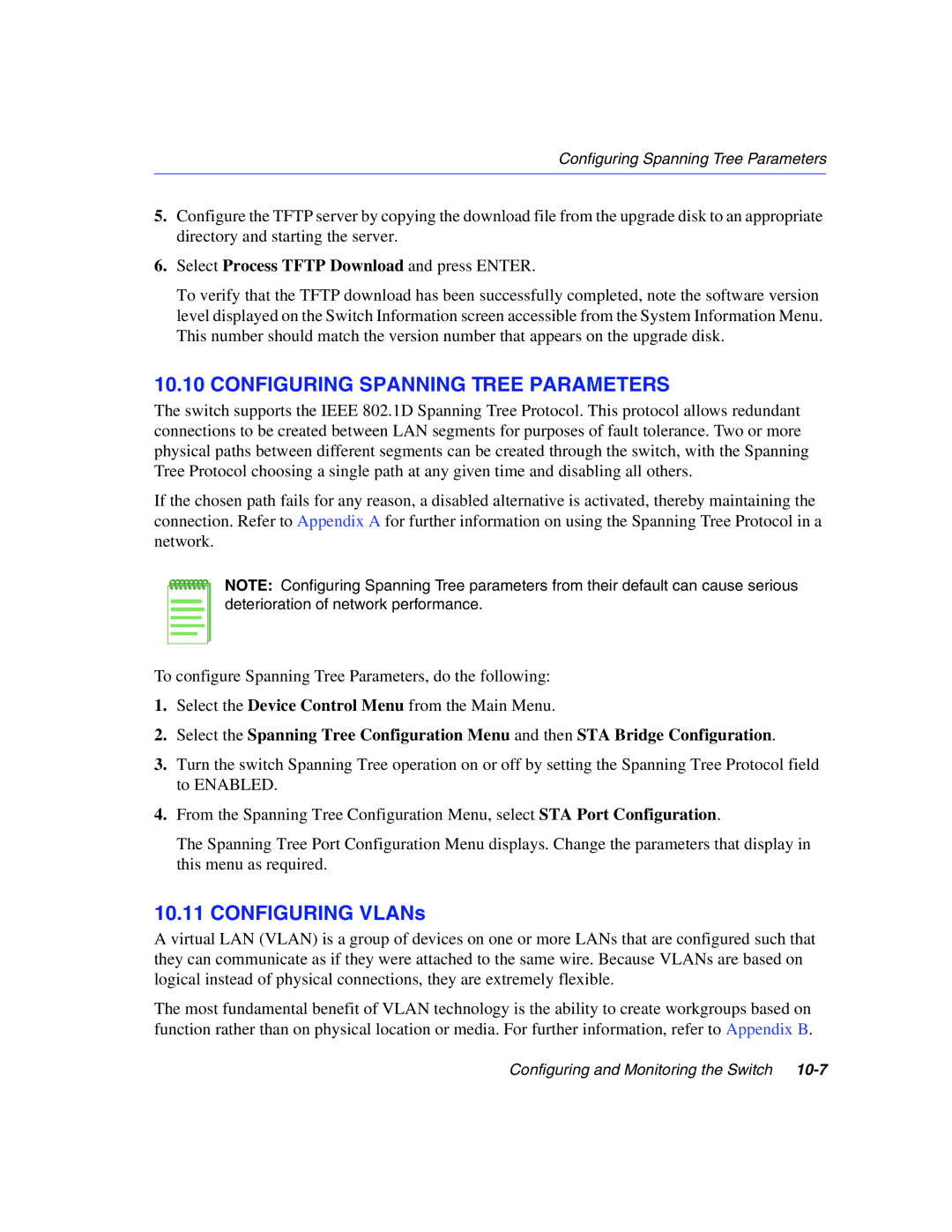
Configuring Spanning Tree Parameters
5.Configure the TFTP server by copying the download file from the upgrade disk to an appropriate directory and starting the server.
6.Select Process TFTP Download and press ENTER.
To verify that the TFTP download has been successfully completed, note the software version level displayed on the Switch Information screen accessible from the System Information Menu. This number should match the version number that appears on the upgrade disk.
10.10 CONFIGURING SPANNING TREE PARAMETERS
The switch supports the IEEE 802.1D Spanning Tree Protocol. This protocol allows redundant connections to be created between LAN segments for purposes of fault tolerance. Two or more physical paths between different segments can be created through the switch, with the Spanning Tree Protocol choosing a single path at any given time and disabling all others.
If the chosen path fails for any reason, a disabled alternative is activated, thereby maintaining the connection. Refer to Appendix A for further information on using the Spanning Tree Protocol in a network.
NOTE: Configuring Spanning Tree parameters from their default can cause serious deterioration of network performance.
To configure Spanning Tree Parameters, do the following:
1.Select the Device Control Menu from the Main Menu.
2.Select the Spanning Tree Configuration Menu and then STA Bridge Configuration.
3.Turn the switch Spanning Tree operation on or off by setting the Spanning Tree Protocol field to ENABLED.
4.From the Spanning Tree Configuration Menu, select STA Port Configuration.
The Spanning Tree Port Configuration Menu displays. Change the parameters that display in this menu as required.
10.11 CONFIGURING VLANs
A virtual LAN (VLAN) is a group of devices on one or more LANs that are configured such that they can communicate as if they were attached to the same wire. Because VLANs are based on logical instead of physical connections, they are extremely flexible.
The most fundamental benefit of VLAN technology is the ability to create workgroups based on function rather than on physical location or media. For further information, refer to Appendix B.
Configuring and Monitoring the Switch
